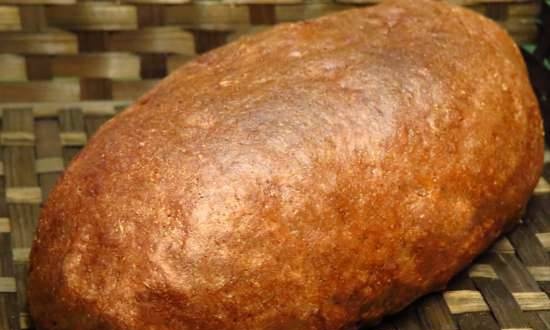|
 Who does not know about the remarkable ability of dogs to find a person or things belonging to him by smell? There is no doubt, in terms of smell, it is difficult for me with a dog and many other animals to compete. Who does not know about the remarkable ability of dogs to find a person or things belonging to him by smell? There is no doubt, in terms of smell, it is difficult for me with a dog and many other animals to compete.
Bison, for example, senses the presence of a person at a distance of 1300 meters, smoke beetles flock to the smell of smoke for 50-80 kilometers, and hunting dogs search for game that is 800-1000 meters away from them.
But humans are also quite sensitive to odors. A person with a normal sense of smell smells camphor, even if the concentration of this substance is extremely low - millionths of a gram in one liter of air. And recent studies have shown that many people without any special training can easily distinguish the smell of a woman from the smell of a man, recognize other people by smell, recognize their own smell ...
 How do we distinguish between many smells? How is a specific olfactory image formed? How do we distinguish between many smells? How is a specific olfactory image formed?
In order to smell something, you need to smell it. The bulk of the air will rush along the lower and middle nasal passages, and part of it will enter the upper nasal passage. where the endings of the olfactory nerve are concentrated. There are also olfactory receptors - cells that directly perceive smells. Each receptor is separate from. their neighbors by the so-called supporting cells. The receptor and supporting cells are firmly adhered to each other and form the olfactory epithelium.
The surface of the epithelium is covered with a layer of special secretion, similar to jelly. It plays the role of a kind of filter: odorous molecules must pass through it before reaching the receptors. The "filter" delays some of them for a greater or lesser period of time, while others let it pass with ease.
The very process of olfactory reception is carried out on the surface of receptor cells, of which there are more than ten million in humans. In shape, the receptor cell resembles a jug with an elongated neck: at its end there are bundles of long thin cilia — olfactory hairs. And the lower end of the "jug" gradually becomes thinner and turns into a nerve fiber. Such fibers, extending from all receptors, intertwine, form the olfactory nerve, which enters the corresponding parts of the brain.
On the olfactory hairs, receptive areas differing in chemical and physical properties were found. That is why any such site comes into contact not with any odorous molecule, but “prefers” a certain “partner”.
At the same time, each olfactory receptor has a rich set of different receptive sites. is a “generalist”. Therefore, the halls of, say, dandelion, generates signals in a variety of receptors. But since the receptive sites of a certain type are by no means evenly divided between all receptors, the power of these signals, the intensity of the response of each receptor to a given smell will be individual. From the number of receptors involved and the intensity of the signals received from each of them, a mosaic picture is formed corresponding to a specific smell.
 And it happens like this. The receptor sends short-term nerve impulses, transmitting information about a given odorous substance. First, they travel along nerve fibers to the olfactory bulb, located on the lower surface of the frontal lobe of the cerebral cortex. The neurons of this structure carry out preliminary processing of all incoming signals. And it happens like this. The receptor sends short-term nerve impulses, transmitting information about a given odorous substance. First, they travel along nerve fibers to the olfactory bulb, located on the lower surface of the frontal lobe of the cerebral cortex. The neurons of this structure carry out preliminary processing of all incoming signals.
Then the semi-processed information is sent to that part of the cerebral cortex, which bears the beautiful name "sea horse gyrus".Here, in the upper section of the olfactory analyzer, information about odorous molecules undergoes final processing and a sensation of one or another smell is formed. Moreover, all this complex work of smell recognition is done in a fraction of a second, about 100-200 milliseconds. In other words, I haven't had time to smell it properly, but you already know: it smells of linden blossom, or freshly cut hay, or Antonov's apple ...
Often, wanting to succinctly characterize the organ of smell, it is compared with a gas chromatograph, called a "living gas analyzer". But. right, the most modern device is very far from our organ of smell. The olfactory analyzer typically has to deal with complex odors. So, the smell of coffee contains at least fifty individual odorous compounds, the smell of fried meat - more than thirty, and the smell of strawberries - more than a hundred. And one should not think that all hundred compounds have similar chemical properties and smell of strawberries. If you let them smell them all separately, then. perhaps, hardly anyone would guess that this smell is one of the components of the wonderful forest berry aroma. Only the olfactory organ is able to form a certain total sensation, which experts call the olfactory image. To form and permanently fix it in memory.
It must be said that the memory of smells is one of the unique manifestations of the human psyche, it is many times superior to ordinary visual and auditory memory. Even fleeting olfactory images can leave a deep trace, and often a sudden smell resurrects events of the past, transports us through years and even decades, forcing us to remember places and events when exactly the same olfactory sensation arose.
Perception of smells is closely related to the state of the body. in particular, with its hormonal background. And this background is not the same even throughout the day. For example, the level of some hormone in the blood has changed, and the smell that I liked is perceived differently. Changes in the hormonal background are associated, in particular, with the fact that in many women during pregnancy, the sense of smell is noticeably exacerbated and even perverted: some familiar odors begin to cause nausea, and sometimes vomiting.
The sense of smell plays a significant role in human life and is not limited to a passive reflection of the smells of the surrounding world. It actively affects the work of the brain and, through it, on the body as a whole. Depending on what smells surround us, appetite may improve or disappear, the frequency and depth of breathing, the strength and rhythm of heart contractions may change, mood may worsen or rise.
This is curious:
Within a few days after birth, babies unmistakably distinguish their mother from other women by smell.
Most natural odors, including lilac, are complex odorous compounds. Conventionally, the smell is represented on the tab by a figure of five elements. Each element is an odorous molecule. The receptor cells of the olfactory epithelium of the upper nasal passage (I) are the first to come into contact with the odorous molecules and send information about each molecule to the olfactory bulb (II). Here the signals are preprocessed and partially summed (figures of three elements) Then this information is sent to the cerebral cortex (III), where it is analyzed and again summed up (figure of four elements). And finally, in the upper part of the olfactory analyzer (IV), an olfactory image is formed (a figure of five elements)
Olfactory epithelium diagram
- - a layer of mucus
- - receptor cells
- - nerve fibers
- - supporting cells
- - a gland that produces mucus

A.M. Korolev
|
 Who does not know about the remarkable ability of dogs to find a person or things belonging to him by smell? There is no doubt, in terms of smell, it is difficult for me with a dog and many other animals to compete.
Who does not know about the remarkable ability of dogs to find a person or things belonging to him by smell? There is no doubt, in terms of smell, it is difficult for me with a dog and many other animals to compete. How do we distinguish between many smells? How is a specific olfactory image formed?
How do we distinguish between many smells? How is a specific olfactory image formed? And it happens like this. The receptor sends short-term nerve impulses, transmitting information about a given odorous substance. First, they travel along nerve fibers to the olfactory bulb, located on the lower surface of the frontal lobe of the cerebral cortex. The neurons of this structure carry out preliminary processing of all incoming signals.
And it happens like this. The receptor sends short-term nerve impulses, transmitting information about a given odorous substance. First, they travel along nerve fibers to the olfactory bulb, located on the lower surface of the frontal lobe of the cerebral cortex. The neurons of this structure carry out preliminary processing of all incoming signals.










